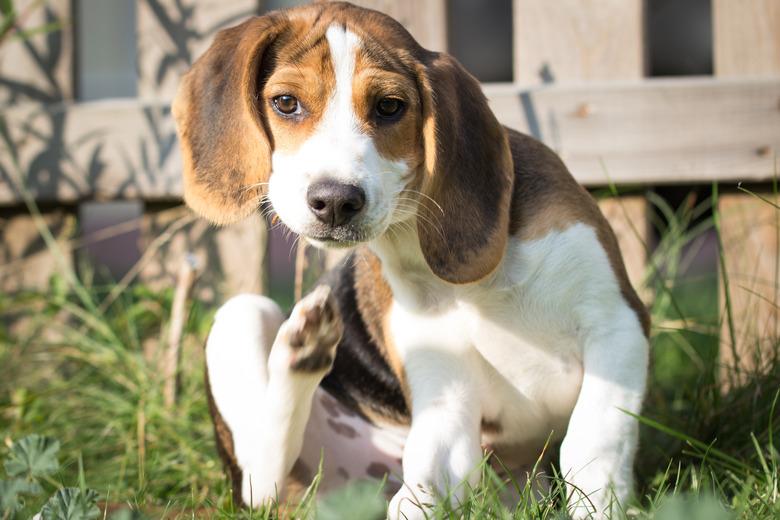Will Tea Tree Oil Work On Dogs For Fleas?
Looking at the long list of ingredients in products like FRONTLINE or Advantage can be scary, and the long warning labels can make a reasonable person paranoid about using these products to kill fleas on dogs. That's why some people use home treatments like tea tree oil for their dog's fleas. However, while tea tree oil can kill and repel fleas, it can also be very dangerous to dogs and is listed as "especially risky" in the Merck Veterinary Manual.
Tea tree oil for dogs
Tea tree oil for dogs
Tea tree oil, also called melaleuca oil, is toxic when ingested by humans, dogs, cats, and other animals. While humans might not lick their skin after applying tea tree oil, dogs and cats do, which is why tea tree oil can be so dangerous when used on pets. While there are some commercially available pet products that contain tea tree oil (for example, tea tree shampoo for fleas), these products are highly diluted and contain only .1 to 1 percent tea tree oil, and many are also rinsed off after use, like shampoos. In order to safely use tea tree oil for fleas at home, you would need to be able to dilute it to about 1 percent strength, which is nearly impossible in a home environment. If you did manage to correctly measure out a safe amount, properly shake it so it is evenly distributed during use, and spray it on the dog, it would still be easy to apply too much on your pet. Because dogs often lick their fur and could ingest the tea tree oil, this could make your dog very sick.
Tea tree oil toxicity
Tea tree oil toxicity
The biggest danger in using tea tree oil on your dog is the risk of tea tree oil toxicity, which can be deadly. The most common symptoms of tea tree oil toxicity can include depression, lethargy, weakness, poor coordination, muscle tremors, and increased drooling. Other symptoms may include vomiting, low body temperature, increased liver enzyme, skin rashes, collapse, and coma. While cats are at greater risk of this condition because they groom themselves more often, dogs suffer from it as well. Symptoms will occur two to 12 hours after ingestion. As little as 10 to 20 milliliters of 100 percent oil have killed both dogs and cats.
Better flea treatments
Better flea treatments
The ingredients in commercial flea treatments may sound scary, but they have been thoroughly tested by both the manufacturers and veterinarians and have been proven to be safe. They are far more effective than home remedies for fleas and are safer than some home treatments, like tea tree oil. On top of this, while commercial flea treatments are highly regulated, essential oils are not, so the ingredients, strength, and quality of the oils are not guaranteed. As an added bonus, many commercially manufactured pet flea treatments actually target the next generation of fleas, preventing eggs from hatching and starting a whole new infestation.
One safe essential oil you may try is rose geranium oil, which can repel fleas when applied to your dog's collar. This treatment is not safe for cats, though. While citrus essential oils are not safe for pets, you can also rub your dog or cat with fresh-squeezed orange or lemon juice as well.
Insist on tea tree oil?
Insist on tea tree oil?
If you absolutely insist on using tea tree oil on your dog, talk to your veterinarian first to find out how to administer it safely. Never administer tea tree oil orally, and always dilute it to .1 to 1 percent strength. Most tea tree oil you buy in stores is sold undiluted, so seek one out that is already partially diluted, or be very careful in diluting it to a safe concentration. Always keep the bottle of tea tree oil in a place where your dog cannot reach it.
Always check with your veterinarian before changing your pet's diet, medication, or physical activity routines. This information is not a substitute for a vet's opinion.
